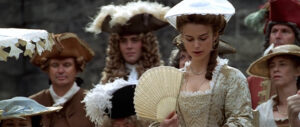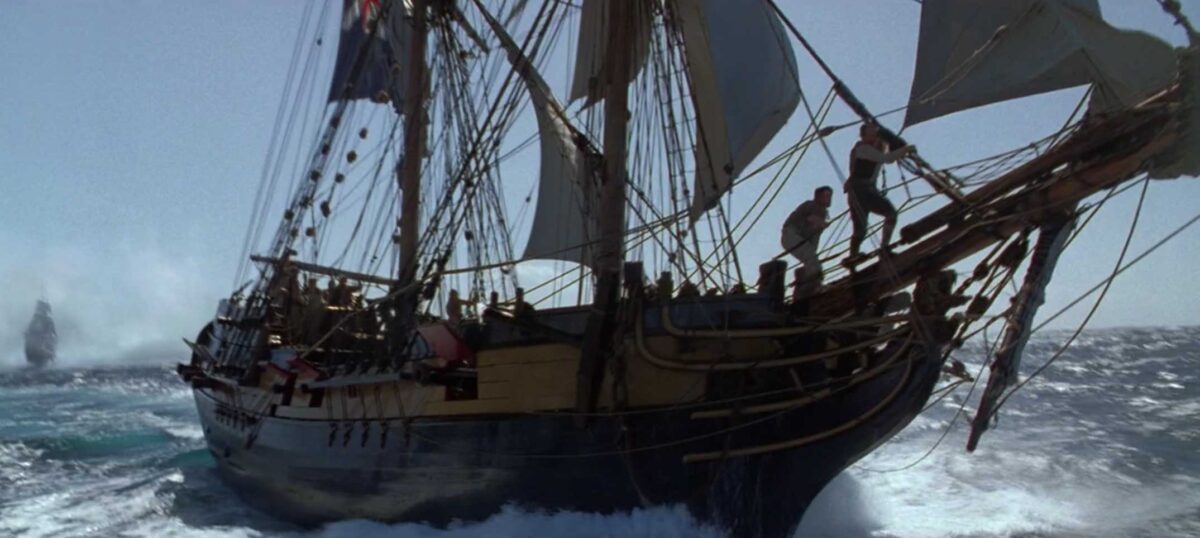by Bryan & Francis
We all have our beloved movies or shows that, it seems, no one else truly recognizes the brilliance of. For us, two of those movies are the second and third Pirates of the Caribbean films, Dead Man’s Chest and At World’s End. While we may exalt them as dark fantasy masterpieces, they are also highly historical films. As an excuse to watch them together (and introduce another friend to them), we recently decided to investigate just how historical they are and, in a bit of (likely futile) fun, try to determine from context clues if we could definitively assign a date or range of dates to these films.

From the opening frames of Curse of the Black Pearl, it is clear that the Pirates of the Caribbean franchise takes place in a general window of the early modern era. Europe has colonized the Americas, and not recently, placing us in at least the late 1600s (more on what political geography can tell us later). Even more indelible is the general vibe of the characters, from head to toe bearing material culture evocative of the 18th century. The women wear stays (NOT corsets, though dialogue makes this mistake), men wear breeches and knickers, authority figures don luscious wigs as symbols of their office, and tricornes and ruffles are everywhere. The uniforms of both Royal Army and Navy similarly place us solidly in the middle of the eighteenth century. Nothing is overly anachronistic, either for the time or with other material culture. So far, so good.
Part and parcel with material culture is the technology seen throughout the original Pirates of the Caribbean trilogy. Firearms and ships offer the most telling commentary. The vast majority of firearms used in the films are true flintlock weapons, whether pistols or longarms. Flintlocks were officially adopted by the armies of all major European powers by 1702, and would not go out of favor until the popularization of the percussion cap well into the nineteenth century. Socket bayonets are also seen, which had been first instituted by the French in 1703. Other weaponry, such as grenades, chain shot, elevating naval guns, and “long nines,” similarly point to a period no earlier than the first decade of the 18th century. The two best points of reference for ships come in Curse of the Black Pearl: HMS Dauntless and HMS Interceptor. The former appears to be what is usually known as a “man of war,” a two-decker heavy warship in use from the seventeenth to early nineteenth centuries. The latter, the fastest ship in the Caribbean save for the mythical Black Pearl, is clearly a frigate; these ships saw service for approximately the same period as men of war, if not slightly longer due to their speed. The two other iconic ships of the series, the Pearl and the Flying Dutchman, are slightly harder to place, but this in fact is a historical positive, not a negative. Both these vessels are clearly merchantmen that have been repurposed for piracy (or supernatural terror), and the Dutchman even looks like an older, seventeenth- or even sixteenth century vessel to reflect its captain’s origins.

So far, we have been able to determine only a general range of time for the Pirates trilogy based on its material culture, but we had to know: could we go deeper? Here we would have to move into the dialogue of the movies to see if oblique mentions of events, countries, or other entities might narrow our window. Some are easy, and align with what we already surmised. The East India Company, villains of the second and third movies, was founded in 1600 (though they were never quite as involved in the Caribbean colonies as these films portray). Royal Navy vessels, forts, and governmental buildings fly the Union Jack, but a Union Jack without Ireland’s crimson bar, putting us firmly after 1705 but before 1800. The main setting of the first movie, Port Royal in Jamaica, was taken by the British in 1655, and was a pirate haven until 1706. Port Royal is very obviously no longer a pirate haven in the movies, which actually fits well with another clue: the Pirate Code, “as laid forth by Morgan and Bartholomew,” is often referenced throughout the first and third films especially; Henry Morgan and Bartholomew Roberts were indeed real pirates of the golden age of piracy, and in fact did create a pirate code sometime between 1682 and 1688. Roberts, the younger of the two, died in 1722, leaving us a slightly refined period of approximately 1725 to 1799 for our movies. This actually works very well with the movies’ lore; Jack Sparrow, Hector Barbossa, and crew explicitly do not exist within the golden age of piracy; they continuously make reference to pirates as a dying breed, and in Curse of the Black Pearl the titular ship is even referred to as “the last major pirate threat in the Caribbean.”
Victory! Or so we thought. Like Theoden facing down the gullet of a fell beast, however, our moment of triumph was doomed in the face of one last, seemingly insignificant, detail: Singapore. Briefly mentioned in both the first and second films, Singapore finally gets to shine in its own right as the backdrop of At World’s End’s opening set piece as the heroes fight to escape the forces of both the EIC and the treacherous pirate lord of Singapore, Sao Feng. Yet, as I learned relatively recently in John Darwin’s magnificent Unlocking the World, the city of Singapore was founded by Sir Stamford Raffles, where no previous settlement had existed for centuries, in 1819, in the wake of Britain’s victory in the Napoleonic Wars. The simultaneous existence of Singapore and the Union Jack as portrayed in the Pirates films was thus impossible.
Our grand endeavor had run aground not on material culture or technology, but on the rocks of a specific fact of political geography. But for Singapore, we could have had a date in the eighteenth century. But for that Union Jack, we might have been able to swing a date in the 1820s (not convincingly, but maybe). The simplest decision on the part of the writers to instead refer to Macao or to include the modern naval ensign could have delivered what we sought, but alas, it was not to be. Perhaps it’s fitting, however, that just like in any work of history, success or failure here depended on the knife’s edge of a single, small detail.
